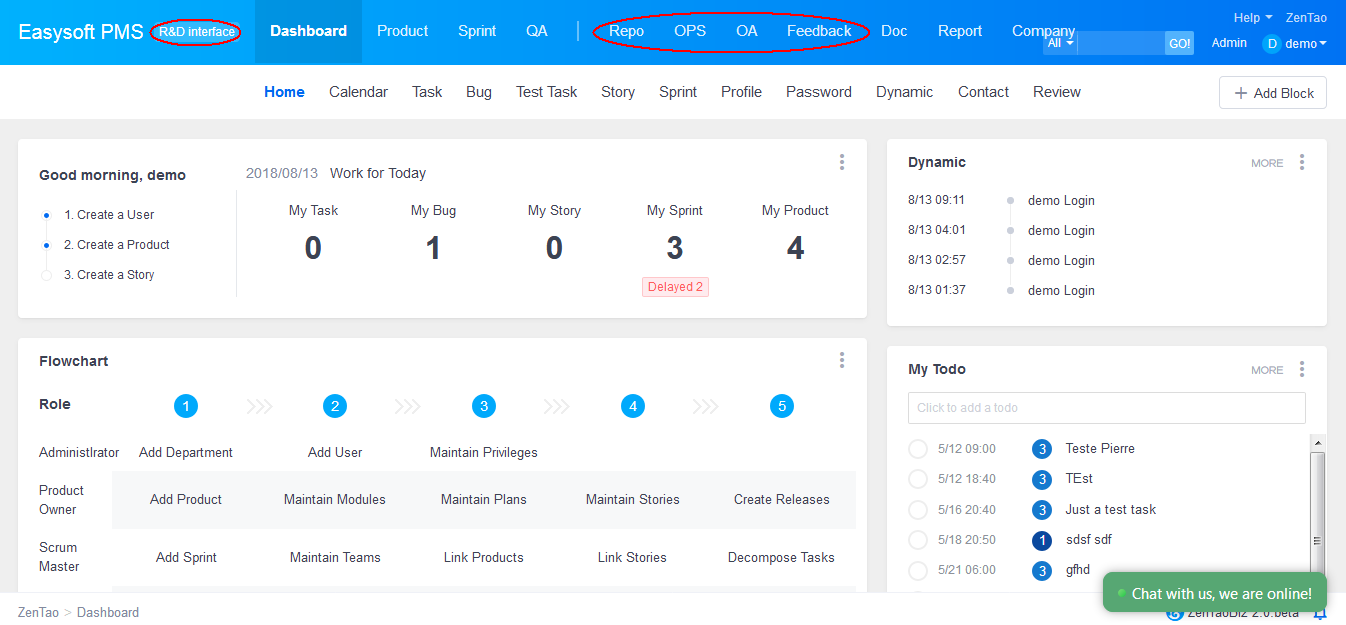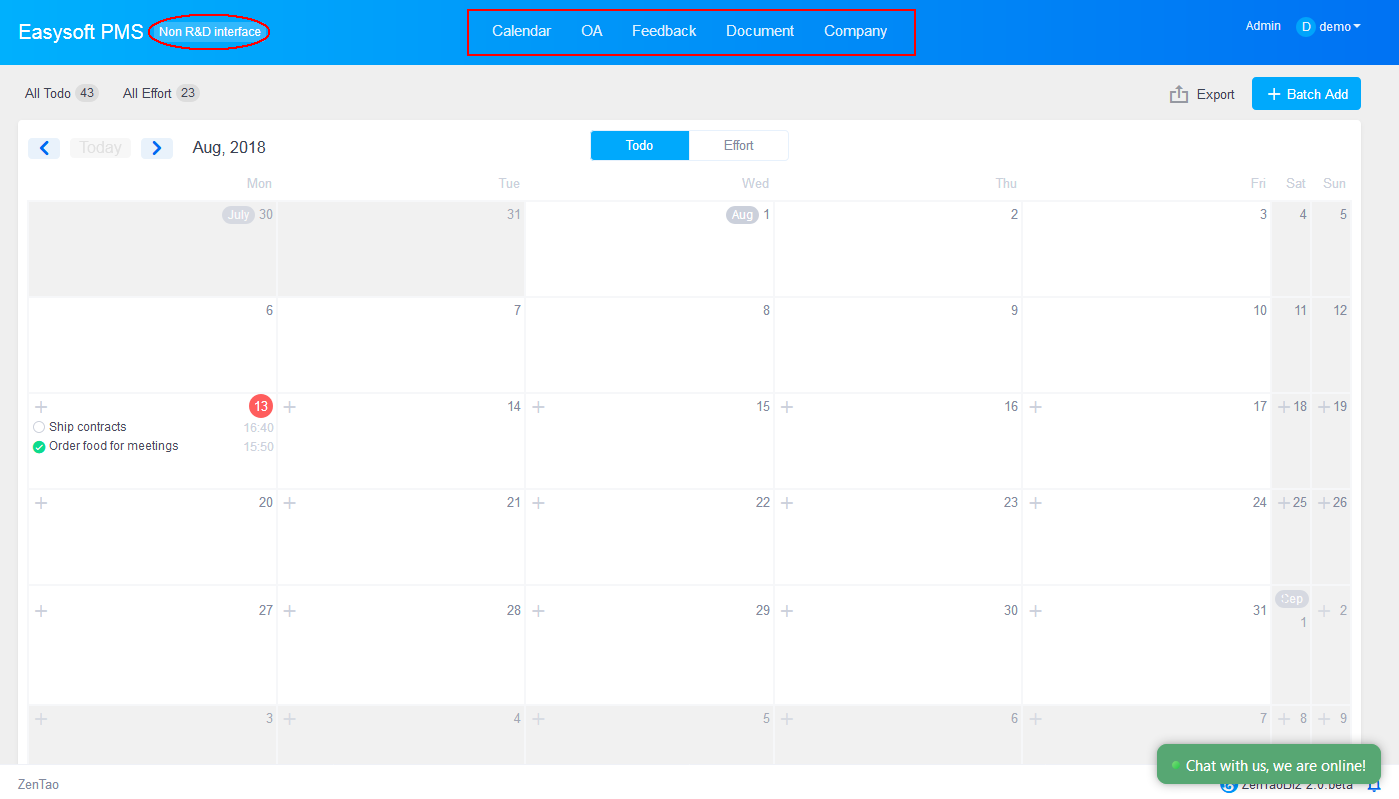DevOps Management in ZenTao
- 原创
- 2018-08-09 17:00:31
- 滕菲
- 1309
DevOps is quite a popular concept nowadays, which is to combine software development(Dev) and software operations (Ops). According to Jez Humble, DevOps is “a cross-disciplinary community of practice dedicated to the study of building, evolving and operating rapidly-changing resilient systems at scale.”1
What is DevOps?
It strongly emphasizes automation and monitoring in "all steps of software construction, from integration, testing, releasing to deployment and infrastructure management. DevOps aims at shorter development cycles, increased deployment frequency, and more dependable releases, in close alignment with business objectives."2
Agile
and DevOps
Like what has been mentioned above, DevOps aims at a faster and frequent release, which is also a demonstration of the success of agile development in the last few decades.
Ernest Mueller mentioned that "The old view of operations tended towards the “Dev” side being the “makers” and the “Ops” side being the “people that deal with the creation after its birth”. – the realization of the harm that has been done in the industry of those two being treated as concerns is the core driver behind DevOps. In this way, DevOps can be interpreted as an outgrowth of Agile – agile software development prescribes close collaboration of customers, product management, developers, and (sometimes) QA to fill in the gaps and rapidly iterate towards a better product."
DevOps Tool
A DevOps tool is a set of tools that are expected to perform several roles in software development and delivery, including
Code development and review;
Build and deploy;
Test: functional and non-functional;
Release and change management;
Configuration and management of the infrastructure;
Monitoring the software performance; and more.
In the DevOps world, there’s been an explosion of tools in release (Jenkins, Travis, TeamCity), configuration management (puppet, chef, ansible, cfengine), orchestration (zookeeper, noah, mesos), monitoring, virtualization and containerization (AWS, OpenStack, vagrant, docker) and many more.
Goals
DevOps is to improve the frequency of software development, to deliver the software faster to the market, to lower the failure rate of releases, to shorten the time between fixes, and to recover in case of crash faster.
Next, let's take a look at how
ZenTao Enterprise helps DevOps management.
DevOps in ZenTao
ZenTao Enterprise is based on the features of ZenTao open source and has DevOps management, Office Automation, Feedback Management and file version management, etc. ZenTao can cover pretty much of the DevOps management.

It also has two different interfaces for developer users and nondeveloper users. For non-developers, they will see Calendar, OA, Feedback, Document, and Company.

If you want to know more about DevOps management using ZenTao, you can try in online clicking
HERE. Or contact us at renee@easysoft.ltdto get a FREE TRIAL for up to 6 months!
Reference
1.
https://theagileadmin.com/what-is-devops/
2. https://en.wikipedia.org/wiki/DevOps
3. https://techbeacon.com/7-steps-choosing-right-devops-tools


